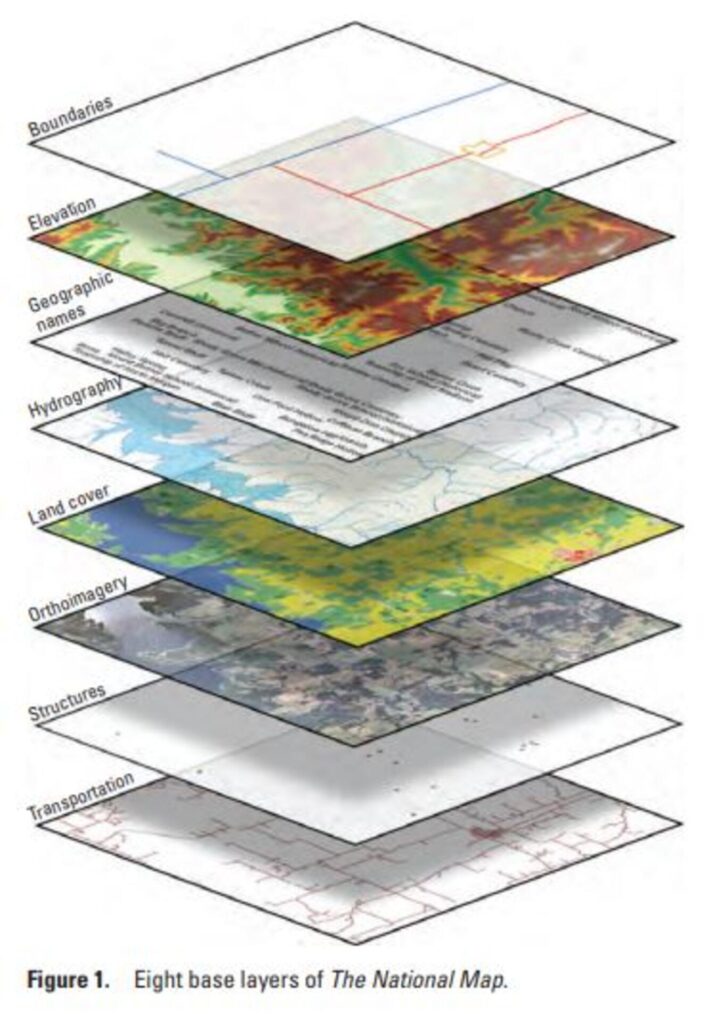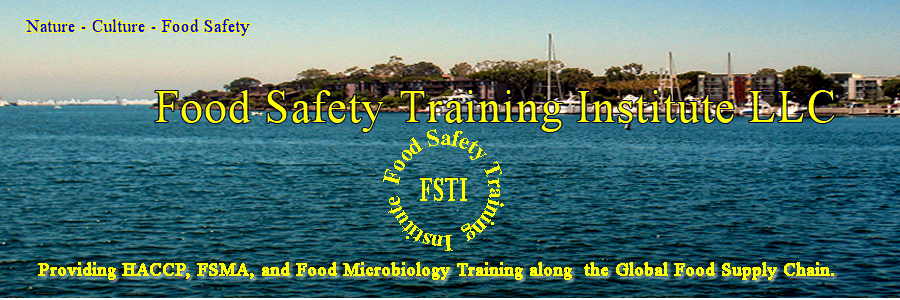The FDA New Era of Smarter Food Safety in July of 2020 outlined “achievable goals to enhance traceability, improve predictive analytics, respond more rapidly to outbreaks, address new business models, reduce contamination of food, and foster the development of stronger food safety cultures”. Among the tools and procedures to achieve these goals are using Artificial Intelligence (AI), the Internets of Things ( IOT), Omics (genomics, transcriptomics, proteomics, other omics), GIS, GPS, Big Data, Blockchain, cloud computing, bio-sensors, chemo-sensors and mobile devices. The Food Safety Training Institute and the GeoAI Learning Center are devoted to provide training on current scientific, technical, and regulatory understanding for safe food production, manufacturing, processing, packing, holding, retailing and distribution from farm to table along the national and global food supply chain.

The surface, subsurface and above the surface of the earth is covered and filled by billions of natural and constructed features, boundaries and phenomena. The information about the location as well as other attributes of these features are crucial to the public and all levels of business, government and academia. Over eighty percent all data refer to them. The term spatial, geographic, or geospatial data is used interchangeably for the kind of data that has both locational information as well as other attributes. For example, a house has an address -which is locational information- and has other attributes such as price, number of rooms, owner, type, etc., which are attribute information.
There are different kinds of features, boundaries and phenomena. Rocks, minerals, oil, gas, air,oceans, lakes, and rivers are examples of natural features. Buildings, roads, railroads, farms, ranches, food processing sites, on the other hand, are examples of constructed features. Boundaries separate features such as state, city, county, and district boundaries. Earthquakes, faults, volcanism, tornado, tsunami, flood, fire and landslide and illnesses are example of phenomena.
The geospatal data and their analysis also are used in selecting safe sites for agriculture, aquaculture, food processing plants and study of foodborne illnesses and their trends, patterns and distribution and how to control them.
National Geospatial Data
The U.S. Board on Geographic Names has a geospatial database with over two million natural and cultural features in the United States. The database is in the public domain, which can be displayed and downloaded. The links below give access to pica bytes of geospatial data, geospatial metadata and helps of all kinds. No matter at which level you work with geospatial data, these sites must be remembers and their uses mastered.
Geographic Information Science (GIS)

To capture, create, store, manage, query, display, and analyze pica-bytes of accurate, reliable, timely and relevant geospatial data, a multidisciplinary science that combines the science of computer, information, physical and social sciences with cartography, remote sensing, topology, surveying, geodesy, photogrammetry, Global Positioning System, database management system, and Geographic Information System was created. This science was called geospatial information science. To learn more about GIScience, read “What Is Geographic Information Science?” by Dr. Michael F. Goodchild.
The individual who coined the term GIScience defined it as “a multidisciplinary research enterprise that addresses the nature of geographic information and the application of geospatial technologies to basic scientific questions” (Goodchild, 1992).
CEGIS [USGS Center of Excellence for Geographic Information Science] staff recently identified the reach of GIScience as including “the traditional mapping disciplines of surveying, aerial photographic interpretation, photogrammetry, remote sensing, and cartography. It also encompasses a broader scope of issues related to the modeling and representation of geographic phenomena, data, and processes; human cognition of geographic information; the analysis, depiction, and use of uncertainty information; spatial analysis and modeling, including geographic information systems (GIS); scale sensitivities; geographic ontologies; visualization; and other similar topics” (CEGIS, 2006). GIScience relies on expertise from many allied fields and has intimate ties to geospatial technology and applications.
Global Positioning Systems (GPS)
The information about the location of natural and constructed geospatial objects such as minerals, buildings,. rivers, roads, forests and development sites are at the heart of geospatial data collection, storage, display and analysis. Where a house, a mine, a shopping center, a factory, a farm and a Superfund site is located is important to surveyors, real estate professionals, geologists, environmentalists and many other professionals and the public. The Global Positioning System (GPS) provides this crucial locational information.
It is astonishing that we now have the location (latitude, longitude, and altitude) of any place at any time on earth with almost pinpoint accuracy. This free, accurate, reliable and globally available location information is a powerful and indispensable tool. Just image the power a GPS, GIS and Internet-enabled, hand-held device- such as a cell phone- can provide. Whether in geosciences, marketing, transportation, real estate, farming, food processing, navigation, banking, agro-agriculture, environment, mapping and surveying, epidemiology, the GPS, combined with GIS and the Internet and AI, have revolutionized location-centric disciplines.
Remote Sensing and Image Processing

The information about the objects and events that fills the space between the core of the earth and the Sun is crucial for the proper managing of the modern world. The vast majority of these data are acquired remotely by mounting sensors on spacecrafts, satellites, aircrafts, or ships. The information about the location and attributes of the objects in land, air and water collected, processed and saved digitally by these remote sensors constitutes a major part of the existing geospatial data. Geologists, environmental scientists, agribusiness, food processors, real estate professionals, agriculturalists, epidemiologists and almost every person involved in business, government and physical and social sciences need remotely sensed data. The introduction of remotely sensed data by Google Earth, Google Map and Microsoft Bing has popularized the use of these remotely sensed data by the public and professionals.
Surviving

Photogrammetry

Photogrammetry is the art, science, and technology of measuring geometric properties of constructed and natural features and boundaries on the surface of the earth using photographs (aerial) and digital images. The geometric properties could be length, height, area or distance between two points. Constructed features could be buildings, roads, railroads and parks. Natural features could be rivers, lakes, islands, bays, gulfs, oceans, mountains, and valleys. Stereophotogrammetry is used to estimate the coordinates of natural and constructed features. Photogrammetry is used in making topographic maps. It is also used in geology, engineering and many other fields.
Geodesy



Links to USGS Sources (Below)
USGS National Geospatial Program
USGS Spectroscopy and Hyperspectral Imaging of Critical Mineral Resources
Explore Search: Aerial Photography
USGS Earth Resources Observation and Science (EROS) Center
USGS Center of Excellence for Geospatial Information Science (CEGIS)
USGS Digital Elevation Model (DLM)
Landsat and USGS Products and Services
USGS Introduction to The National Map
The US Board of Geographic Names (GNIS)
Federal Geographic Data Committee (FGDC)
Links to GPS Sources (Below)
Global Positioning System (GPS)
Links to Google, GIS and AI (Below)
Importing Geographic Information Systems (GIS) data in Google Earth Desktop
Links to USDA Sources Below)
USDA GIS and Digital Soil Mapping for Soil Survey
USDA Natural Resources Conservation Service –
Digital Soil Mapping
Global Hyperspectral Imaging Spectral-library of Agricultural-Crops
USDA and Artificial Intelligence
Links to EPA Sources (Below)
EPA Geospatial Data Download Service
Software Programing and GeoAI
Support Vector Machine (SVM) – IBM
What is a NoSQL database? – MongoDB
Linnks to Microsoft AI and GIS
(Below)
Artificial Intelligence and Machine Learning by Microsoft
Links to NASA Sources Below)
Open Geosptial Geosortium (OGC) GeoTIFF Standard
MrSID Image Format, Generation 3
Multiresolution Seamless Image Database (MrSID):
A Modern Geospatial
Image Format
Joint Photographic Experts Group (JPEG)
Tagged Image File Format (TIFF)
Hyperspectral Data for Land and Coastal Systems
NASA Lidar ( Light Detection and Ranging)
Visible and Infrared Mapping Spectrometer
NEAR INFRARED SPECTROGRAPH (NIRSPEC)
Links to Censes Bureau Sources (Below)
US Census Burea TIGER/Line Shapefiles
Links to FDA Sources (Below)
FDA’s Geographic Information System
How the FDA Safeguards the Global Supply of Food and Drugs
Links to ESRI Sources (Below)
ESRI GIS
Geospatial artificial intelligence (GeoAI)
Pretrained Deep Learning Models
Imagery and Remote Sensing and GIS
Spatial Analytics and Data Science
Other GIS Sources (Links Below)

